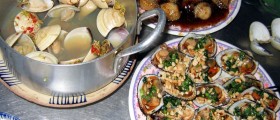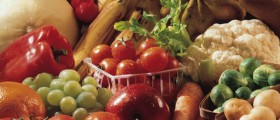
Folate, also known as folic acid or folacin, is one of the vitamins from the B complex, best known for its significance in pregnancy and prevention of birth defects. Folate is one of the most chemically complicated vitamins, and human bodies have difficulties in its absorption. At best, only 50 percent of ingested folate is absorbed by the body. This is why it is so important to learn which foods are rich in folate and to incorporate them in the daily menu.
Health benefits of folateFolate supports numerous processes in human body. One of the primary functions of folate is to allow for complete development of red blood cells. If the body lacks folic acid, the development of red blood cells is obstructed which results in anemia and insufficient supply of oxygen to the living cells. Folate also helps to maintain blood circulation at the optimum level and prevents cardiovascular diseases.
Folate is essential for production and restoration of cells with short life span. These cells are usually those that line the body's exposed surfaces, like skin cells, intestinal cells and cells in our mouth. Folate deficiency may, thus, induce problems with gingivitis, periodontal disease, seborrheic dermatitis and various intestinal cancers.
Deficiency of folate has been associated to numerous nervous system problems including general mental fatigue, non-senile dementia, depression, restless leg syndrome, nervous system problems in the hands and feet, irritability, forgetfulness, confusion and insomnia. Folate rich foods
The recommended dietary allowance (RDA) for folic acid for adults is 400 micro-grams. Pregnant and lactating females will need 500-600 micro-grams of folate daily. Teenagers need about 300 micro-grams while children need from 65 to 200 micro-grams, depending on their age.
Excellent sources of folate include romaine lettuce, which provides 38% of RDA, spinach - providing 28% of RDA, asparagus - providing 27% of RDA, turnip greens - providing 26% of RDA, mustard greens - providing 22% of RDA, calf's liver - providing 20% of RDA, parsley - providing 19% of RDA, collard greens - providing 16% of RDA, broccoli, cauliflower, beets and lentils.
Very good sources include squash, black beans, pinto beans, garbanzo beans, papaya and string beans.
Symptoms of folate deficiency are most commonly associated with problems with nerves and they include irritability, mental fatigue, forgetfulness, confusion, depression and insomnia. Moreover, signs of folate deficiency may include muscle tiredness, problems with intestinal tracts and gingivitis.
Poor dietary intake is the most probable cause of folate deficiency, but this health problem may also be caused by insufficient intake of other B vitamins such as vitamin B1, B2 and B3, involved in folate recycling. Poor protein intake can result in deficiency of folate binding proteins. Excessive intake of alcohol, smoking, drinking coffee can also contribute to folate deficiency.
















Your thoughts on this
Loading...